Podcast Flashback: Your Best Mum Crop Ever
About four years ago, I took a leap of faith and launched a podcast because I had a gut feeling the “trend” would catch on and growers would engage with educational content delivered via audio. I’d seen plenty of growers in greenhouses with headphones in and suspected some production content would be appreciated. Today, podcasting has become an established medium, and with more than 100 episodes under my belt (and more than 15,000 downloads!), I think my hunch was correct.
Way back in 2019, I worked with Dr. Will Healy (the now-retired Ball technical services guru ) to produce a three-part miniseries on garden mum production, based on his 30-plus years working with the crop. THE FIRST PART was all about starting your crop—keeping them vegetative and growing, not blooming. If your mums are potted up and growing, now is the time to listen to this podcast, share it with your production team and learn from a garden mum legend.

Dr. Healy goes indepth into the two most critical factors at this stage of the game: temperature and feeding. He covers the most effective temperatures (mums like it hot!) and teaches you all about thermophotoperiodicity. Then he transitions over to fertilizer strategies, because mums are heavy feeders early.
Other pieces of the production puzzle are covered in detail, including insect and disease prevention, PGRs and plenty more. With tons of tips, tricks and real-world stories peppered throughout, this podcast episode is super critical, because starting your mum crop during some of the busiest spring shipping weeks means you must be diligent!

Nick’s Tip of the Week: Unpacking Spring ’23 Part II—Pathogen Test Kits
Each week, I’ll work with my buddy Nick Flax, a technical services expert at Ball, to share a concern that’s come up during one of his numerous calls with growers across North America. This week, he continues a review of common issues from spring 2023, and tactics to get ahead of the game next year. The topic du jour is test strips.
PROBLEM: Looking back, another major struggle for many of you this year was limited ability to identify pathogens quickly and correctly. A critical part of disease management is proper identification of the causal agent. Failing to correctly ID pathogens when early symptoms first appear frequently leads to longer crops times to clean up the issue and/or increased losses.
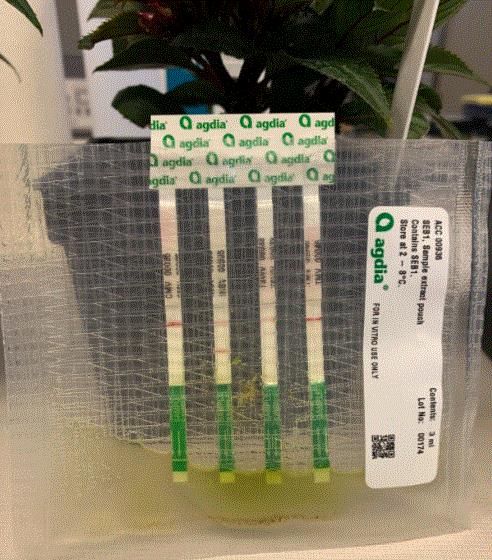
NICK’S TIP: Some diseases have characteristic symptoms and can be identified based on these, especially when you’ve had previous experience with the disease in question. However, early symptoms for many diseases are often much less distinct and can be mistaken for abiotic disorders like mineral nutrient deficiencies or other factors. If you have a pathologist on staff or an in-house diagnostic lab, that’s great—but most of you don’t have either. Without these, high accuracy when diagnosing early symptoms of suspected bacterial or viral disease is virtually impossible, other than saying, “Based on my Google image search, it looks like it could be X, Y or Z.” So, what can you use to quickly check for suspected bacterial and viral pathogens? Test kits!
What is a Pathogen Test Kit?
Test kits are typically made up of a couple of components, including a pouch containing a buffer solution and test strips that are kept separately until the test is performed. In general, test kits for bacterial and viral pathogens work pretty much the same way: You take some symptomatic plant tissue, mash it up in the buffer solution pouch, and submerge the tip of the test strip in the solution. As the strip wicks up the mashed-up plant “juice” and buffer solution, an indicator in the strip reacts with the solution. If the pathogen that the kit is designed to test for is present, the strip will indicate a positive result. The technical term for this kind of test is a lateral flow assay.
Why Keep Pathogen Test Kits On-hand?
Since the naked eye cannot see bacteria or viral particles, test kits are pretty much the only way most of you can determine exactly which pathogen you’re dealing with. The alternative is to send plant samples off to a lab equipped with similar, higher-resolution diagnostic tools, but this can be time-consuming and costly, depending on the lab. In the meantime, while you wait for your test results, the pathogen could be spreading through your crops and causing more damage. If you had a test kit on hand, you’d have had a much better idea of how to appropriately manage your disease risk when you first saw symptoms, and potentially head it off sooner.
Important Things to Know About Test Kits
While test strip kits can be powerful tools for early disease detection, there are a few important things to know before using them:
-
Results from test strips are not the be-all, end-all of whether or not a disease is present. Yes, they are strong indicators of the presence of specific pathogens, but you should always have a lab do follow-up testing to confirm the diagnosis.
-
Some test strip kits test positive for multiple different pathogens. For example, Tobacco Mosaic Virus (TMV) test kits react with over a dozen tobamoviruses, and additional testing is often needed to confirm exactly which one is causing disease.
-
Though test strip kits are pretty darn accurate, they’re not infallible. False positives can occur; hence the reason why follow-up testing in a lab is strongly encouraged. The best way to reduce the risk of false positives is to follow the kit instructions exactly as they are written and ensure the test kits are properly stored until used.
-
Only test symptomatic plants. Blindly testing healthy crops is a waste of money (test kits typically run $10 to $15 each) and false positives could cause you to overreact and throw away plants unnecessarily.
-
Test strip kits have an expiration date. Shelf life of these kits is often more than long enough to carry you through a given year, but plan on doing a refresh on any unused test kits from one year to the next. Also, when you buy these kits, be sure to check the expiration date and contact your supplier if they sent kits that will expire really soon.
-
Because test strip kits are perishable, make sure you have an appropriate place to store them. Typical refrigerator temperatures—36 to 46 F (2–8 C) are suitable, but make sure they don’t get colder or hotter than this before you’re ready to use them.
-
When in doubt, reach out. If you’re ever uncertain how to execute test kit instructions or interpret the results, reach out to your supplier or your favorite diagnostician. Again, nothing is worse than a false- or murky-positive test result. A second opinion from an expert can help prevent overreaction, or at the very least help you rest a little easier at night.
Which Kind of Test Strip Kit(s) Should You Have?
There are TONS of test kits for different viruses and bacterial pathogens, so it’s easy to get overwhelmed when deciding which ones to keep on hand. I often suggest that growers maintain a supply of test kits for viruses or bacterial pathogens that they have dealt with in the past—especially when they have had the same disease issue over multiple consecutive years. Here are some other considerations if you are unsure which will be most worth your while:
-
Get a few kits that test for pathogens on crops with known disease risks. For example, let’s say you grow zinnias in spring/summer or flowering cabbage and kale in fall. Both crops have known seedborne disease risks, so it would be wise to have a few Xanthomonas spp. test kits available.
-
If you have dealt with tospoviruses (like tomato spotted wilt virus—TSWV) or other insect-transmitted viruses, it would be wise to have test kits for these viruses at the ready. Plants in the landscape around your greenhouse can serve as viral reservoirs from one year to the next, and incoming pests can pick up the virus before entering your crops. Until you can fully eradicate viral reservoirs, keep a few test kits handy to help catch early symptoms. In this case, early virus detection can also serve as an indicator to ramp-up control measures for the virus’ insect vector and help reduce year-over-year losses.
-
Even if you don’t tangle with viruses often, it is still wise to have a few test kits around just in case. Rather than getting individual test kits for common viruses, you can buy combination kits like Agdia’s ImmunoComb, which tests for multiple groups of common viruses simultaneously, including Cucumber Mosaic Virus (CMV), Impatiens Necrotic Spot Virus (INSV), TSWV and Tobacco Mosaic Virus (TMV).

Spotlight on Vinca Culture Resources
I was looking through a weekly shipping report, and although the vast majority of boxes arriving at greenhouse across North America at the moment are filled with mum cuttings, plenty of vinca plugs are also on the road. Here are some solid vinca resources to go over and file away so they’re at your fingertips now and for next spring.
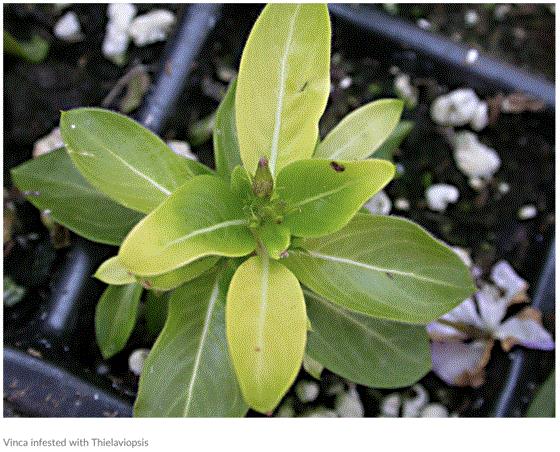
Part of the GROWING TOUGH CROPS series from Premier-Tech Horticulture (the company behind PRO-MIX) is a deep dive into vinca. This document takes the crop from Stage 1 through finish and touches on all environmental considerations, as well as nutrition, watering and pest and disease control.
The Cora XDR series from Syngenta is a mainstay in greenhouses supplying regions facing pressure from Phytophthora blight; and as you’d expect, the company provides excellent cultural recommendations to help produce the crops with high quality. Here’s their CULTURE GUIDE.
If you really want to go deep into vinca, check out this GUIDE FOR COMMERCIAL PRODUCTION OF VINCA from the University of Georgia. As the researchers write, you cannot grow vinca the same way you grow other bedding plants. Vinca is a specialty crop with very distinct requirements. This bulletin will address those requirements and cover a typical production schedule and crop budget.

Controlling Spurge in Container Production
Keeping outdoor production areas weed-free is important for so many reasons—limiting establishment in your actively growing crops and reducing pests and diseases that can be harbored within to name just two. Spotted spurge is one of these weeds that you want to watch for and remove or treat ASAP.
Our friends at e-GRO recently released an alert focused on this common broadleaf weed that’s native to North America and thus a potential problem for just about every greenhouse and nursery.
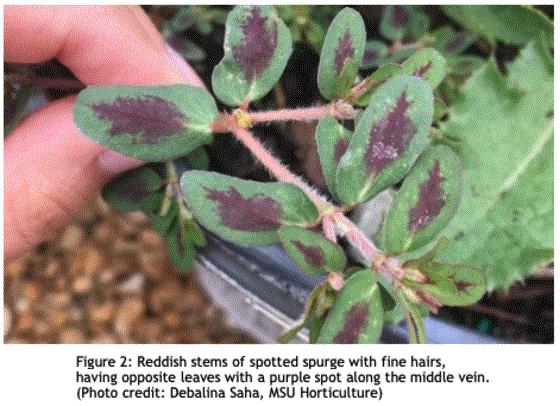
Written by Debalina Saha and Manjot Kaur Sidhu at Michigan State University, CONTROLLING SPOTTED SPURGE IN GREENHOUSE CONTAINER PRODUCTION will help you identify spotted spurge, understand its biology, and put together treatment and management protocols. Like all alerts from e-GRO, you’ll find plenty of photos and a thorough list of chemical and non-chemical control options.
I was just talking with some peers about how awesome the resources available from e-GRO are and how much we, as an industry, should appreciate what this group of leading researchers do for growers. Whether you’re looking to solve problems in production or stay up-to-date on the latest industry research, I suggest you SUBSCRIBE to their alerts and BOOKMARK e-GRO and add them to the top shelf of your grower toolbox.

Online Greenhouse Training Starts Next Week!
Do you have team members who would benefit from an online course in greenhouse production, taught by experienced university professors? I imagine the answer is “YES!”
In partnership with the American Floral Endowment, University of Florida/IFAS has you covered—in English AND Spanish!
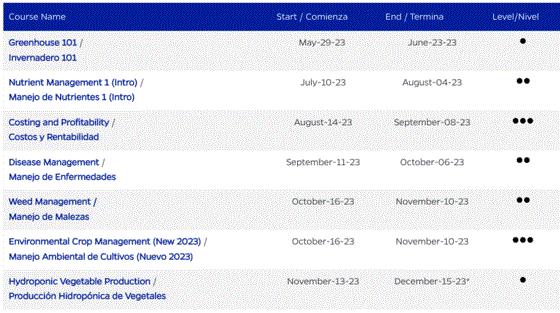
Running from May 29 until December 23, courses are about to kick off covering a range of topics, including Greenhouse 101, Nutrient Management, Costing & Profitability, Disease Management, Weed Management, Environmental Crop Management and Hydroponic Vegetable Production. Courses range from introductory to advanced, and some count toward Plant Health Professional and Advanced Grower certification.
Each four-week course is available for registration individually. The cost for each (besides the profitability course) is $265 per student. This seems like a GREAT value for high-quality education that can help take your team to the next level.
FIND ALL INFORMATION AND COURSE DESCRIPTIONS HERE.

Pothos Issues: Keep Testing pH and EC
As Nick covered in the last newsletter, the importance of testing pH and EC can never be overstated. It’s good practice throughout your crop production to avoid challenges related to levels too high or too low. Here’s an example that the Tech On Demand team encountered while working with a pothos grower. In this case high EC was the problem.
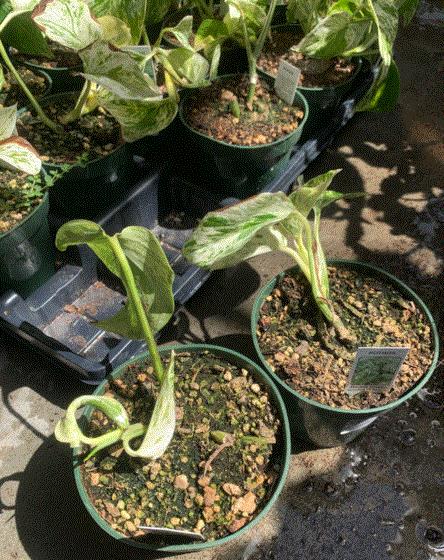
After observing the issues shown in the photo above, the grower was advised to test, and they determined these pothos had an EC of 3.2 mS/cm after a leaching irrigation. The verdict was that the high EC stalled the growth (plants were six months old), limited root growth and burned the leaf edges.
The recommendation to get the crop back on track was, thankfully, pretty simple: check the substrate EC and match fertilizer concentration and irrigation to plant needs. Then, flush thoroughly and leach with clear water to bring the EC back down.
Hopefully, you’re testing your EC regularly to avoid problems like this.
Finish Line ...
Every couple months I feel the need to give a shout out to the Ball RedBook as a not-so-subtle reminder for you to consider ordering a set for yourself or for your favorite grower or team member. It’s that time again.
In its 19th edition, the Ball RedBook is bigger and better than ever—nearly 1,000 pages across two volumes covering every topic the modern greenhouse operator needs to know. This latest edition includes sections on robotics and artificial intelligence, controlled-environment agriculture, and cannabis production, to name just a few of the many updates and additions.

For generations, the Redbook has been a go-to resource for greenhouse professionals and I see them within reach on the bookshelf of growers of all skill and experience levels. If you’ve put off ordering your copies of the newest version, stop waiting—CLICK HERE AND GET THAT ORDER IN!
I hope the sun shines in your area this weekend and continues what seems to be an excellent retail season in most regions. Talk to ya’ next week.



Please feel free to send your comments, constructive criticism and topic ideas to me at bcalkins@ballhort.com.

Bill Calkins
Editor - Tech On Demand
This email was received by you and 26,273 other fine subscribers!
If you're interested in advertising in Tech On Demand, contact Kim Brown ASAP and she'll hook you up.